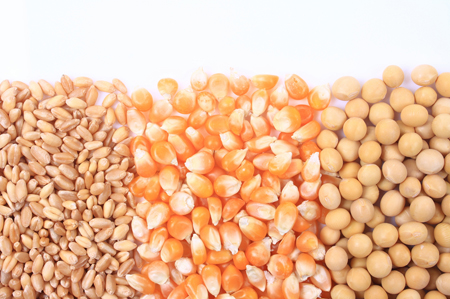 (Agrimoney) – The United Nations countered bullish talk in grain markets, foreseeing “subdued” wheat prices, and “generally ample” stocks of coarse grains too, and cautioning against expectations of gains in oilseed values.
(Agrimoney) – The United Nations countered bullish talk in grain markets, foreseeing “subdued” wheat prices, and “generally ample” stocks of coarse grains too, and cautioning against expectations of gains in oilseed values.
The UN’s food agency, the Food and Agriculture Organization, in a twice-yearly briefing flagged “good supply prospects” for wheat, as it lifted by 2.8m tonnes to 743.2m tonnes its forecast for world output in 2017-18.
While still down nearly 17m tonnes year on year, a production outlook at that level was well above estimates from other observers such as the US Department of Agriculture, which forecasts global output at 737.8m tonnes, with the International Grains Council having a 735.9m-tonne figure.
The FAO is a little more upbeat on prospects for harvests in the likes of Russia, the top exporter, and the European Union, where “although dryness in recent months has dampened yield expectations in western areas, a year-on-year increase in the overall yield level is still forecast.
‘Prices to stay subdued’
On inventories, the agency hiked its estimate for world stocks at the close of 2017-18 by 9.8m tonnes to a record 257.4m tonnes, although reflecting in the main an upgrade to data for China, whose stockpiles are less sensitive to global prices, in being unavailable for trade.
Still, even though wheat stocks in major exporting countries are poised to tighten somewhat, compared with demand, the stocks-to-use ratio will, at 18.5%, be “still above the five-year average”.
“Supplies are seen to remain ample in 2017-18, resulting in international prices staying subdued, especially during the first half of the season,” the FAO said.
The comments come amid a rally in US grain futures, albeit to levels still low by recent historical stands, with price gains fostered by concerns over dry weather in the US, and in countries such as Australia and Canada too.
Coarse grain prospects
For coarse grains, such as barley, corn and sorghum, the FAO also flagged “generally ample supply prospects”, lifting its forecast for world inventories at the close of 2017-18 by 3.6m tonnes to 274.5m tonnes.
While a drop in stocks of 8.8m tonnes year on year, that decline was viewed as down to China, whose stocks of coarse grains, as for wheat, are less sensitive for world prices.
Indeed, the agency flagged “upward revisions to the forecasts for end-season corn inventories” in Argentina, Brazil and Canada, more than offsetting a cut to expectations for the US.
Indeed, the FAO said that in Brazil, the recent strong harvest “could lead to a two-fold rise in the country’s corn inventories, to 11.5 million tonnes”.
Oilseed price prospects
In oilseeds, the agency, while yet to release formal balance sheets for 2017-18, also doubted potential for a recovery in prices which, while depressed, remain strong enough “to favour oilseeds over rival crops” in farmers’ sowings plans.
The FAO forecast that the “world’s aggregate 2017-18 oil crop production would basically match the current season’s record level’s,” adding that the outlook “provides scope for international oilseed, oil and meal prices to stabilise at their current relatively low level during the coming months – barring unexpected supply shocks.”
Although the overall picture disguises the prospect of a production shortfall in oilseed meals – unlike in vegetable oils – “thanks to record-high carry-over stocks of soybean and soymeal, the portended production deficit should not result in tighter oilseeds and product balances”.
Dairy vs sugar
The comments came as the FAO also unveiled data on global food prices showing a 2.2% rise in values in May, the first increase in three months.
The increase was led by dairy, which showed a 5.1% price rise, helped by the boost to butter values from “firm domestic demand in Europe and North America”, as Agrimoney.com has highlighted this week.
“Ample intervention stocks in the European Union limited the increase in skim milk powder prices,” the agency added
Sugar prices bucked the trend, falling 2.3% to a 13-month low thanks to being “heavily affected by higher-than-expected sugar output in Brazil’s Centre South region, combined with the sudden slide in the Brazilian real, which discouraged crush for ethanol in the domestic market in favour of relatively more lucrative sugar exports.
“Expectations of larger exports from Pakistan, and China’s decision to impose high duties on imports beyond its WTO tariff-rate quota commitment, exerted additional downward pressure on international sugar prices.”




